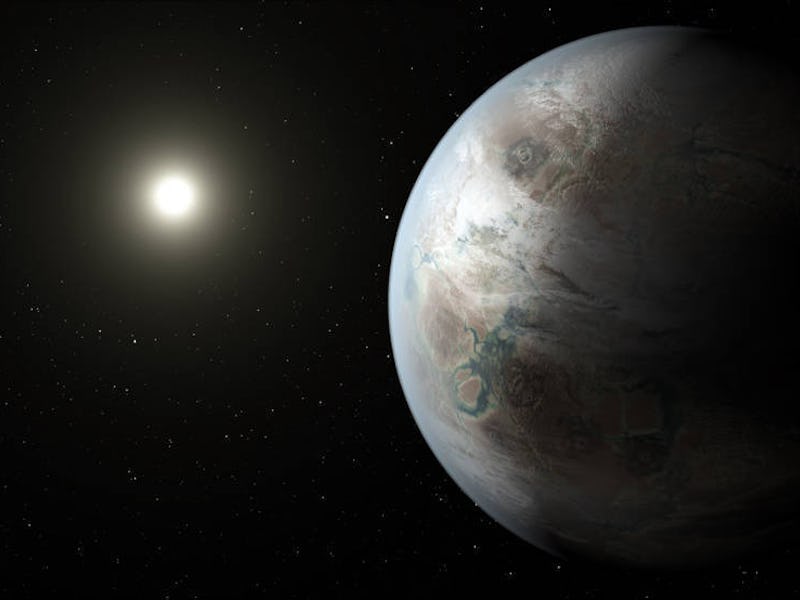Kepler 452b is Earth's 'Older Brother' According to NASA
It's the closest thing we've found to home sweet home.

NASA just announced the discovery of a world that is more similar to Earth than anything else humans have discovered so far. Meet Kepler 452b — it’s got a 385-day year, orbits a G-class star like Sol, and is in that sweet Goldilocks zone that could support temperatures right for water.
It’s “a pretty good, close cousin” to being “Earth 2.0,” said NASA science administrator John Grunsfeld, with a better than 50-50 chance of being rocky. On the other hand, this system has been around for 6 billion years — 1.5 billion years older than ours. And Kepler 452b is big: 60 percent larger, meaning you’d certainly feel the amped up gravity. (The next-most-Goldilockish planet, Kepler-186f, is within 10 percent the size of Earth.)
Travelling to Kepler-452b, in the Cygnus constellation 1,400 light-years away, would take a damn long time. But if you were able to bring an ark-full of plants, “They would be able to photosynthesize,” says Kepler data analyst Jon Jenkins,
“It’s awe-inspiring to consider that this planet has spent 6 billion years in the habitable zone of its star; longer than Earth,” Jenkins added in a statement. “That’s substantial opportunity for life to arise, should all the necessary ingredients and conditions for life exist on this planet.”